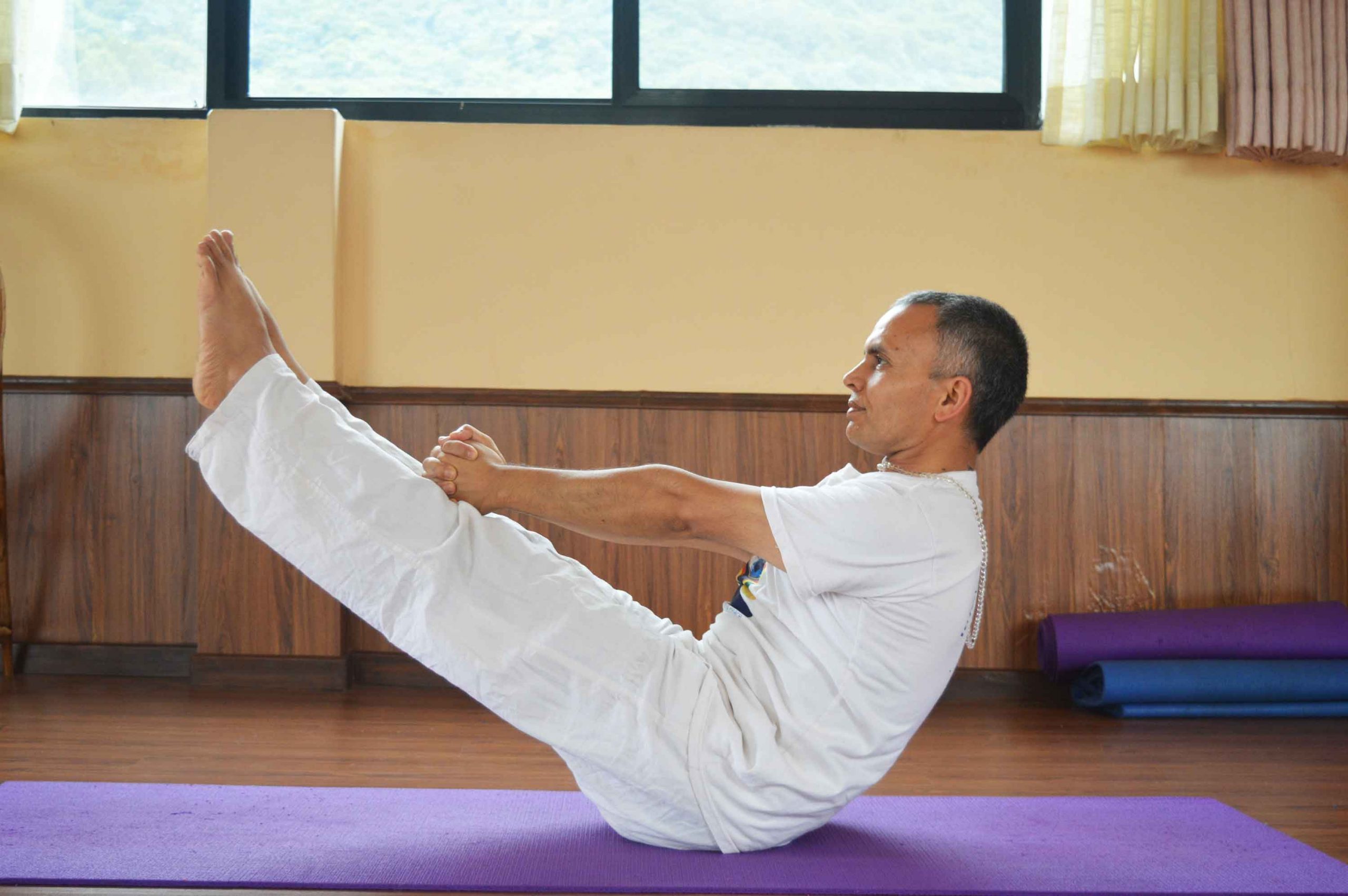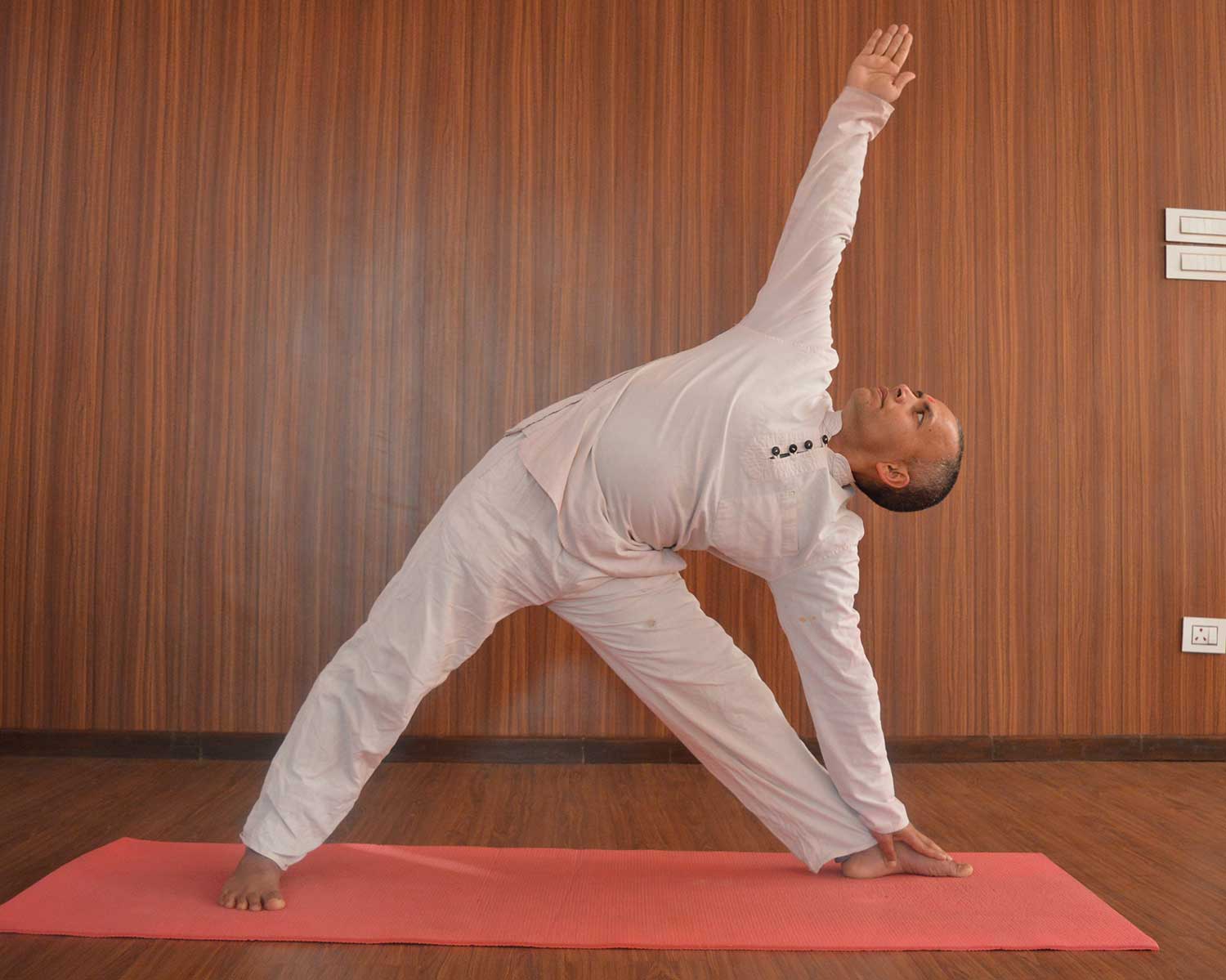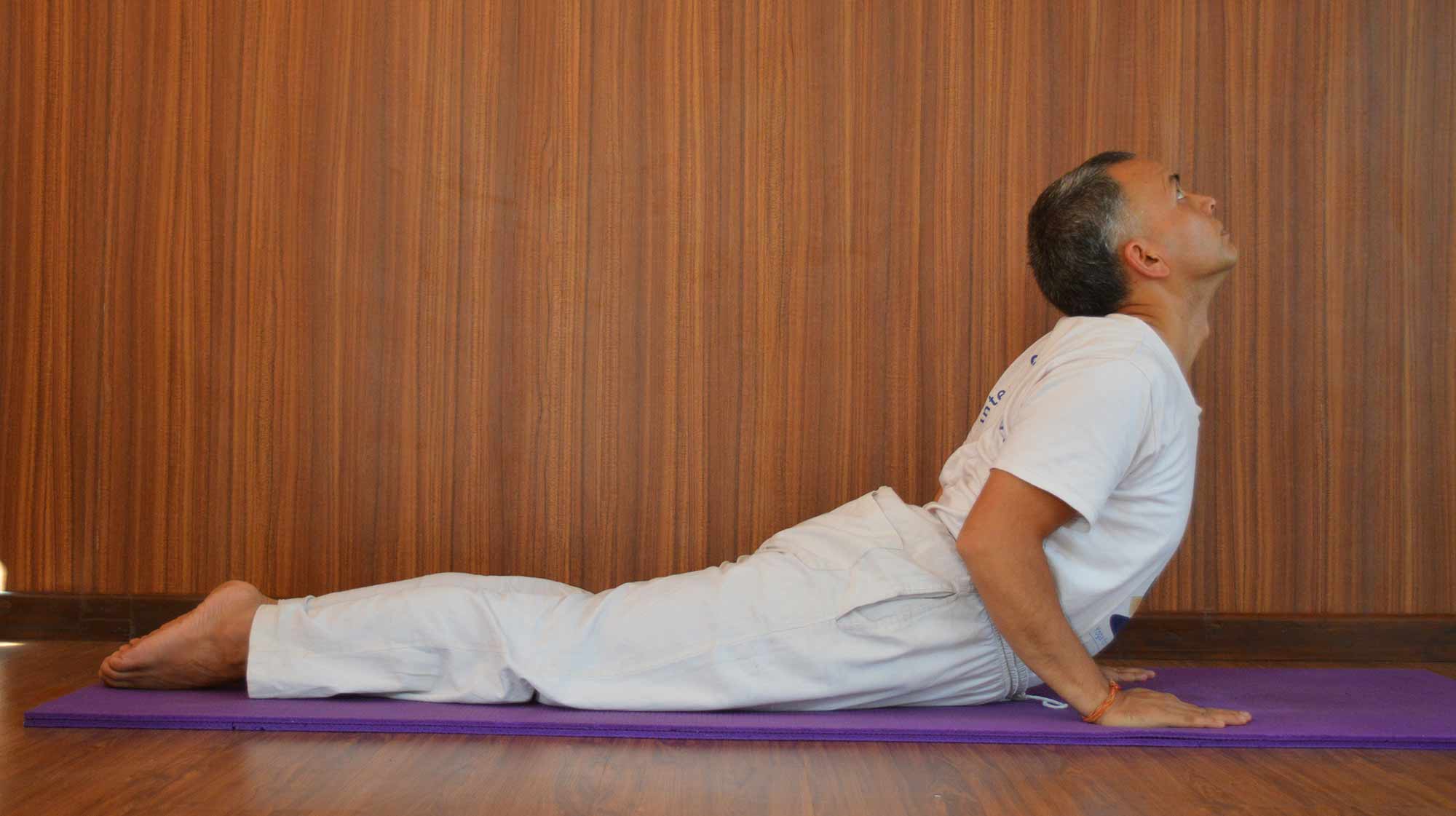
10 Apr 2025 Himalayan Yoga Academy
Yoga is slowly gaining popularity, which is resulting in it becoming a fundamental part of human beings’ lives. In the present world, health is deteriorating physically, mentally, and spiritually due to our hectic schedules and busy lives. A busy schedule is leading for an individual to unhealthy eating and sleeping habits. As a result, there is a rapid growth in obesity and weight gain among the people. Indeed, it has become a serious global issue. Many people have followed different ways to lose their weight and fight obesity. Among several ways, practicing Yoga has proven a boon and one of the safest natural methods. Therefore, we present the top 7 yoga asanas for weight loss and fighting obesity to incorporate in your daily life to reduce stress, improve metabolism, burn fats, and enhance overall body function. It contributes to a sustainable and balanced approach to weight management.
Below, we have listed 7 beneficial yoga asanas for weight loss and fighting obesity, each with its steps, benefits, and side effects.
Top 7 Yoga Asanas for Weight Loss and Fighting Obesity
A. Vajrasana (Thunderbolt Pose)
Vajrasana is an asana where your body posture involves sitting on the knees with the calves underneath the thighs. It is also popular as the Thunderbolt or Diamond pose. This asana is derived from the Sanskrit word ‘Vajra,’ which translates to thunderbolt. There is a variety of asanas described under Vajarsana in ancient texts. In hatha yoga, it is a kneeling asana.
Steps
- Kneel on the mat, and put your toes together and heels apart.
- Rest on the balls of your feet and place the gap in between your heels.
- Set your hands in Jnana or Chin Mudra and place them on the knees.
- Keep your back straight and close your eyes.
- Hold for 30 seconds to a few minutes, focusing on deep and sound breathing.
- Slowly come out of this pose by sitting back and lengthening your legs straight out in front of you to release.

Vajrasana Benefits
- Reduces stress and calms the mind
- Aids digestion after meals
- Reduces bloating, supports weight loss
- Strengthens the lower body with regular practice
Vajrasana Side Effects
- Avoid if you have knee or ankle ligament injuries
- People with severe arthritis, ulcers, or hernia mustn’t attempt
B. Surya Namaskar (Sun Salutation) Asana Series
Surya Namaskar is a flowing sequence of 12 asanas that synchronizes with breathing. It is a complete exercise for the whole body. It is also known as the Sun Salutation or Salute to the Sun. For spiritual connections, many practitioners chant mantras along with each asana.
Steps
Stand in front of the mat.
Sthita Prarthanasana (Standing Prayer Asana): Stand straight, keeping your head straight and shoulder relaxed. Join your hands in Anjali mudra at the heart center. Compose yourself and take a deep breath.
Hasta Uttanasana (Raised Arm Asana): Inhale and raise both your arms above your head and bend back slightly.
Hasta Padasana (Hands to Toe Asana): Exhale and bend forward slowly to touch your toes or feet with your hands.
Ashwa Sanchalanasana (Equestrian Asana): Inhale and take your right leg back. Keep your left leg bent at 90 degrees and hands on the ground. Arch your spine and face upward.
Adhomukha Shvanasana (Downward Dog Asana): Exhale and step your left leg beside the right. At the same time, lift your hips into an inverted V-shape, bringing your head in between your arms.
Ashtanga namaskar (Eight-limb Asana): Retain your breath and lower your knees, chest, and chin to the mat. Keep your hips slightly raised.
Urdhvamukha Shvanasana (Upward Dog Asana): Inhale and slide forward, lifting the head from the ground. Keep your chest and lower body on the ground and look upward.
Repeat the asanas from 1 to 5 in reverse order.
Adhomukha Shvanasana (Downward Dog Asana): Exhale and slowly raise your hips upward. Form your hips into an inverted V-shape, bringing your head in between your arms.
Ashwa Sanchalanasana (Equestrian Asana): Inhale and bring your right foot forward, placing both hands on the ground. Lift the chest and stare forward.
Hastapadasana (Hands to Leg Asana): Exhale and bring both legs together with head in.
Talasana (Raised Arm Asana): Inhale and come back straight. Raise both arms overhead, lengthening the spine.
Sthita Prarthanasana (Standing Prayer Asana): Exhale and bring hands back to the heart center in Anjali mudra. Return to the standing prayer position, composed and balanced.
Repeat the same 12 asanas with another leg to complete one round. (Only perform as your will and stamina allow.)

Surya Namaskar Benefits
- Calories and fat burns with a full-body workout
- Improves posture and balance
- Promotes mental clarity and focus
- Boosts energy and circulation
- Enhances flexibility and strength
Surya Namaskar Side Effects
- Overdoing is restricted
- Rapid practice causes dizziness or fatigue
C. Naukasana (Boat Pose)
Naukasana is an asana where your body forms a “V” shape or a boat shape while balancing on your sit bones, lifting your legs and arms. Hence, it is also called a Boat pose. This asana is derived from the Sanskrit word paripūrṇa, which means boat. The other names for this asana are Navasana or Paripūrṇanāvāsana.
Steps
- Sit on the mat with your legs extended straight and your feet together.
- Bend your knees and lean your torso back.
- Extend your arms in front of you and gently raise both legs.
- Keep your thighs at a 45-degree angle and your arms parallel to the floor.
- Stay in the Boat Pose, forming a “V” shape with your body.
- Gaze at the toes or nose for as long as you can, breathing deeply.
- Release the pose, straighten your legs, and relax.

Naukasana Benefits
- Improves our digestive and reproductive systems
- Burns belly fat and strengthens the Body Muscles
- Make stronger abs, hips, and lower back
- Calms Mind and releases stress
- Improves focus and concentration
Naukasana Side Effects
- Overstretching may strain the lower back or hips
- Improper head alignment causes neck injury
D. Dhanurasana (Bow Pose)
Dhanurasana is an asana where the body posture creates a bow-like shape. This asana is derived from the Sanskrit word ‘dhanur’ which translates bow. Thus, it is also called the Bow pose. It is described as a back-bending asana in hatha yoga
Steps
- Lie flat on your stomach with your legs bent, bringing your ankles toward your buttocks.
- Reach back and hold your ankles with your hands as you inhale.
- Arch the back, lifting the thighs, chest, and head together, and exhale.
- Lift your gaze and raise your feet.
- Carefully bring your ankles close to your buttocks.
- Stretch your arms and hold your ankles, and breathe.
- Make sure you balance on your stomach.
- Exhale, and slowly come back to the ground.
- Lower the head, chest, and legs, and relax.

Dhanurasana Benefits
- Decreases Abdominal Fat
- Better Digestion
- Cure for Fatigue
- Activates Manipura Chakra
- Flexible Hip Joints
Dhanurasana Side Effects
- Avoid during pregnancy, high or low blood pressure, and with abdominal surgeries
- Don’t practice if you have neck injury, lower back concerns, hernia, and migraine headaches
E. Trikonasana (Triangle Pose)
Trikonasana is an asana where the body parts: hands, legs, and backbone form a triangle shape. Hence, it is also called the Triangle pose. This asana is derived from the Sanskrit word Utthita Trikonasana (Extended Triangle Pose). Baddha Trikonasana (bound triangle pose) and Parivrtta Trikonasana (revolved triangle pose) are its variations.
Steps
- Stand straight on the mat with medium stance (about 3 to 4 feet).
- Inhale and stretch your arms at shoulder level.
- Rotate your right foot out 90 degrees and left foot in by 15 degrees and exhale.
- Place your right hand on your right shin bone.
- Raise your left hand upward and gaze at your left thumb.
- Keep taking long, deep breaths.
- Inhale, bend the right knee, and resume the standing position.
- Repeat the same process facing right or using left side.

Trikonasana Benefits
- Stretches the legs, hips, and spine
- Fat loss around the waist and thighs
- Balance and coordination improves
- Stimulates digestion and relieves stress
- Opens the chest and promotes deep breathing
Trikonasana Side Effects
- Incorrect alignment causes strain to the lower back, hamstrings, or neck
- Overextension is avoided, especially with tight hips or legs
F. Bhujangasana (Cobra Pose)
Bhujangasana is an asana where the upper part of your body is elevated above the ground same as a Cobra raising its hood. Therefore, it is also called the Cobra pose. It is classified as a reclining back-bending asana in hatha yoga.
Steps
- Lie down on your stomach and bring your chin to the mat.
- Place your palms under the shoulder and inhale.
- Lift your chest while your hips remain on the floor.
- Breathe, relax your shoulders down away from the ears
- Press your chest forward and exhale.
- Gently lower your chest and bring your chin to the mat.
- Rest your arms down by the sides and relax.

Bhujangasana Benefits
- Strengthens the spine, arms, and shoulders
- Regular practice burns belly fat
- Stimulates the heart and lungs, improving circulation
- Control in Menstrual and gynecological disorders
- Promoting better digestion and easing constipation
Bhujangasana Side Effects
- Avoid with spine issues or during pregnant
- Strictly restricted for hernia, peptic ulcer, hyperthyroidism, or intestinal tuberculosis patients
G. Setu Bandhanasana (Bridge Pose)
Setu Bandhanasana is an asana where the posture of your body becomes like a bridge. Thus, it is also popular as the Bridge pose. The full name of this asana is Setu Bandha Sarvāṅgāsana. In hatha yoga, it is an inverted back-bending asana.
Steps
- Lie on your back and join your legs.
- Bent your knees and bring heels nearer the buttock.
- Hold your ankles firmly and inhale.
- Slowly raise your buttocks.
- Trunk as high as you can to form a bridge.
- Stay comfortably in the pose for 15-30 seconds while breathing.
- Slowly exhale and return to the original position.
- Relax down on your back.

Setu Bandhanasana Benefits
- Tones the core, glutes, and thighs, helping burn fat
- Improves posture and opens rounded shoulders
- Improves digestion and thyroid glands
- Develop the female reproductive organs
- Reduces anxiety and insomnia
Setu Bandhanasana Side Effects
- Don’t practice during pregnancy or neck injury
- Patients with Hernia, Peptic or duodenal ulcers must avoid
Conclusion
These top 7 yoga asanas are not only beneficial for weight loss and fighting obesity but also promote the entire body and mind function. Practicing daily improves digestion, enhances metabolism, and builds up muscles. As a result, it helps burn fat, resulting in weight loss. Fighting obesity is a tough task, but with strong determination, discipline, and routine daily practice, it is achievable. So, start practicing these yoga asanas to stay fit and healthy.
Written By: Anjali B
